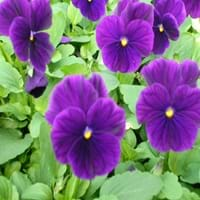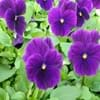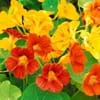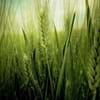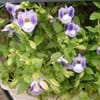Life Span
Annual
Perennial
Origin
World/Pandemic
Africa, South-Eastern Asia
Types
Not Available
Not Available
Habitat
gardens, Grassland, Prairies, Tropical regions
Subtropical forests, Tropical regions
USDA Hardiness Zone
Not Available
5-9
AHS Heat Zone
9 - 1
9 - 5
Sunset Zone
A1, A2, A3, 1a, 1b, 2a, 2b, 3a, 3b, 4, 5, 6, 7, 8, 9, 10, 11, 12, 13, 14, 15, 16, 17, 18, 19, 20, 21, 22, 23, 24
1a, 1b, 2a, 2b, 3a, 3b, 7, 8, 9, 10, 11, 14, 18, 19, 20, 21
Habit
Clump-Forming
Clump-Forming
Flower Color
White, Yellow, Red, Blue, Purple, Orange, Gold, Light Blue, Lavender
Pale Yellow, Yellow green
Flower Color Modifier
Bicolor
Bicolor
Fruit Color
Not Available
Green, Light Green
Leaf Color in Spring
Green
Green
Leaf Color in Summer
Green
Light Green
Leaf Color in Fall
Green
Green, Light Green
Leaf Color in Winter
Light Green
Brown, Light Yellow, Tan
Plant Season
Spring, Summer, Fall, Winter
Summer, Fall, Winter
Sunlight
Full Sun, Partial Sun, Partial shade
Full Sun
Type of Soil
Clay, Loam, Sand
Clay, Loam, Sand
The pH of Soil
Acidic, Neutral, Alkaline
Acidic, Neutral, Alkaline
Soil Drainage
Well drained
Average
Bloom Time
Indeterminate
Summer, Late Summer, Early Fall
Tolerances
Drought
Pollution, Drought, Salt
Where to Plant?
Ground, Pot
Ground
How to Plant?
Seedlings
Seedlings, Stem Cutting
Plant Maintenance
Medium
Medium
Watering Requirements
Allow soil to be completely dry in between waterings, Requires watering in the growing season, Water when soil is dry
Needs less watering
In Summer
Lots of watering
Lots of watering
In Spring
Moderate
Moderate
In Winter
Average Water
Average Water
Soil pH
Acidic, Alkaline, Neutral
Acidic, Neutral, Alkaline
Soil Type
Clay, Loam
Clay, Loam, Sand
Soil Drainage Capacity
Well drained
Average
Sun Exposure
Full Shade, Partial shade, Partial Sun
Full Sun
Pruning
Remove damaged leaves, Remove dead branches, Remove dead leaves
A hard prune may be necessary if the plant becomes woody, Cut upper 1/3 section when young to enhancegrowth, Remove damaged leaves, Remove dead branches, Remove dead leaves
Fertilizers
All-Purpose Liquid Fertilizer
10-10-10 diluted liquid fertilizer, All-Purpose Liquid Fertilizer, Compost
Pests and Diseases
Red blotch
Aphids, Downy mildew, Purple Blotch, Red blotch
Plant Tolerance
Drought
Drought, Salt and Soil Compaction, Shade areas
Flower Petal Number
Single
Single
Foliage Texture
Fine
Fine
Foliage Sheen
Matte
Glossy
Attracts
Butterflies
Bees, Flies, pollinators
Allergy
Not Available
conjunctivitis, sneezing
Aesthetic Uses
Beautification
Not Available
Beauty Benefits
Not Available
Making cosmetics, Not Available
Environmental Uses
Air purification
Air purification, Shadow Tree, Soil protection
Medicinal Uses
Anti-oxidant, Asthma, Dermatitis
Cardiovascular problems, Detoxifies lever, Diabetes, Dysentry, Jaundice, Menstrual Disorders
Part of Plant Used
Flowers
Inner Bark, Leaf Stalks
Other Uses
Culinary use, Making Perfumes
Can be made into a herbal tea, Oil is used for aromatherapy, Used as a fodder tree in agricultural areas
Used As Indoor Plant
Yes
No
Used As Outdoor Plant
Yes
Yes
Garden Design
Feature Plant
Dried Flower/Everlasting, Lawns and Turf, Mixed Border, Wildflower
Botanical Name
VIOLA 'Gem Plum Antique'
Terminalia arjuna
In Hindi
Viola
अर्जुन वृक्ष
In German
Viola
Terminalia arjuna
In French
Alto
Terminalia arjuna
In Spanish
Viola
Migdałecznik arjuna
In Portuguese
Viola
Migdałecznik arjuna
In Polish
Altówka
Migdałecznik arjuna
Phylum
Tracheophyta
Magnoliophyta
Class
Magnoliopsida
Not Available
Order
Malpighiales
Myrtales
Clade
Angiosperms, Eudicots, Rosids
Angiosperms, Eudicots, Rosids
Tribe
Not Available
Not Available
Subfamily
Violoideae
Not Available
Importance of Viola and Arjuna Tree
Want to have the most appropriate plant for your garden? You might want to know the importance of Viola and Arjuna Tree. Basically, these two plants vary in many aspects. Compare Viola and Arjuna Tree as they differ in many characteristics such as their life, care, benefits, facts, etc. Every gardener must at least have the slightest clue about the plants he wants to plant in his garden. Compare their benefits, which differ in many ways like facts and uses. The medicinal use of Viola is Anti-oxidant, Asthma and Dermatitis whereas of Arjuna Tree is Cardiovascular problems, Detoxifies lever, Diabetes, Dysentry, Jaundice and Menstrual Disorders. Viola has beauty benefits as follows: Not Available while Arjuna Tree has beauty benefits as follows: Not Available.
Compare Facts of Viola vs Arjuna Tree
How to choose the best garden plant for your garden depending upon its facts? Here garden plant comparison will help you to solve this query. Compare the facts of Viola vs Arjuna Tree and know which one to choose. As garden plants have benefits and other uses, allergy is also a major drawback of plants for some people. Allergic reactions of Viola are Not Available whereas of Arjuna Tree have conjunctivitis and sneezing respectively. Having a fruit bearing plant in your garden can be a plus point of your garden. Viola has no showy fruits and Arjuna Tree has showy fruits. Also Viola is not flowering and Arjuna Tree is not flowering . You can compare Viola and Arjuna Tree facts and facts of other plants too.
